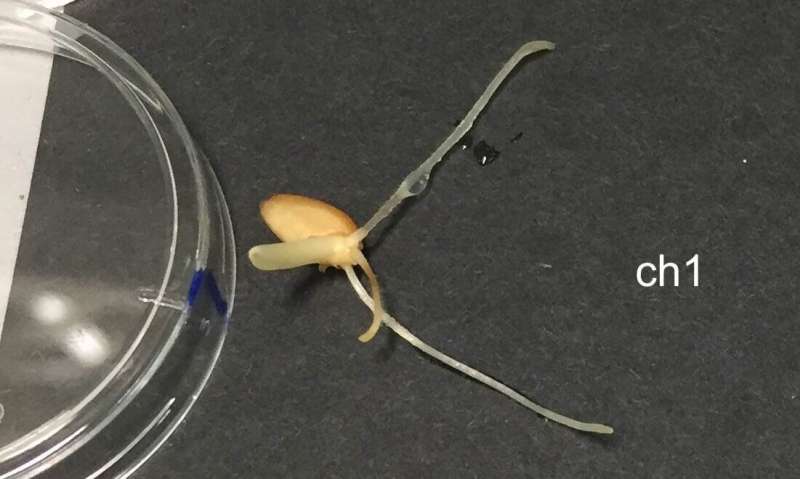Germinating seedlings emit a small amount of light that can be used to predict plant health and development

Extremely faint light emitted by plant seedlings could be used to assess the health and growth potential of individual seeds. The tell-tale signals, known as ultra-weak photon emissions, had previously been detected only from groups of between ten and a thousand or more seedlings.
"We have achieved the first long-term and repeated detection from single seeds," says Cristiano de Mello Gallep, first author of the research report in the open access Journal of Photochemistry and Photobiology. Gallep, at the University of Campinas in Brazil, developed the improved single-seed procedure with Daniel Robert, while working on sabbatical in Robert's lab at the University of Bristol in the UK.
The idea that specific chemical reactions in germinating seedlings should emit light was first proposed in 1920, but the technology to detect the very weak signals from even a large collection of seedlings was not developed until the 1950s. The individual photons of light are believed to be released by chemicals known as reactive oxygen species (ROS) that are formed during normal metabolism. The ROS chemicals react with various biomolecules to generate photons in the ultraviolet, visible and near-infrared regions of the spectrum. The light comes mainly from the roots, which therefore must be accessible to highly sensitive observation to allow it to be detected.
To improve understanding of the mechanisms and potential uses of the light signals, Gallep and Robert developed a procedure for long-term recording of emissions from seedlings of mung bean, corn and wheat. The tests were run in a completely dark chamber using highly sensitive instrumentation able to detect and count the accumulating photons.
"The level of emission seemed to be directly related to the germination performance of a seedling," says Gallep. This could feasibly be used to distinguish more healthy seedlings from less vigorous ones. Another significant finding is that the emissions from different species are readily distinguishable.
Gallep believes the technique will initially be applied only to assist in basic research, but he expects it could eventually be widened for more general horticultural applications. In addition to identifying the most vigorous seedlings, he says it might also be used to examine the response of seedlings to different types of soil, fertilizers and environmental stresses including toxic compounds and attack by microbial pathogens.
The researchers are interested to explore the links between the level of photon emissions and the circadian (daily) rhythms in plant metabolism. This will be one focus for further research. They also expect that improvements in sensitivity could provide more precise information about the location of the light emissions. They are excited by the potential of the technique to provide new insights into the biochemical details of plant development.
More information: Cristiano de Mello Gallep et al. Time-resolved ultra-weak photon emission as germination performance indicator in single seedlings, Journal of Photochemistry and Photobiology (2020). DOI: 10.1016/j.jpap.2020.100001
Provided by SciencePOD


















